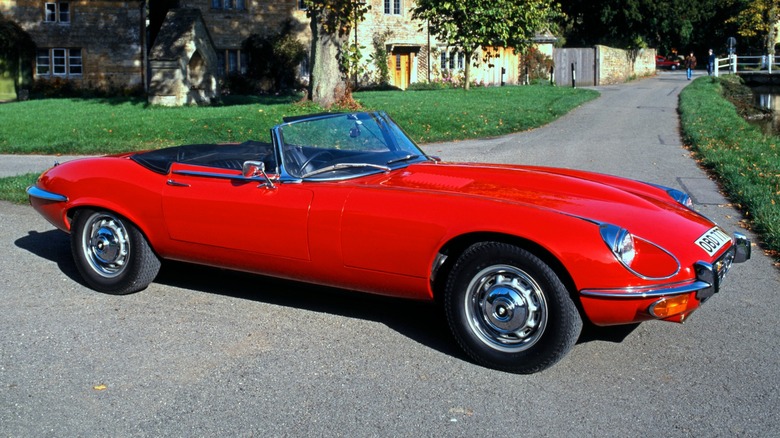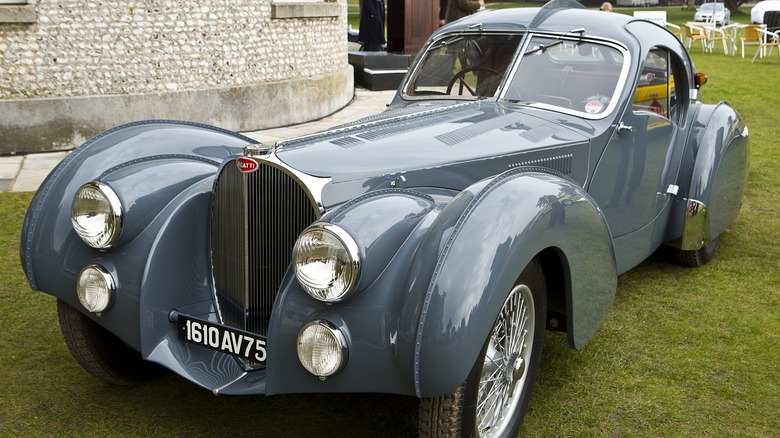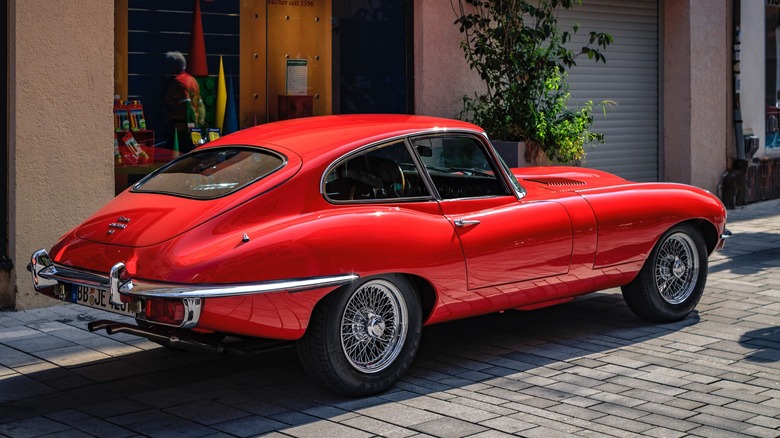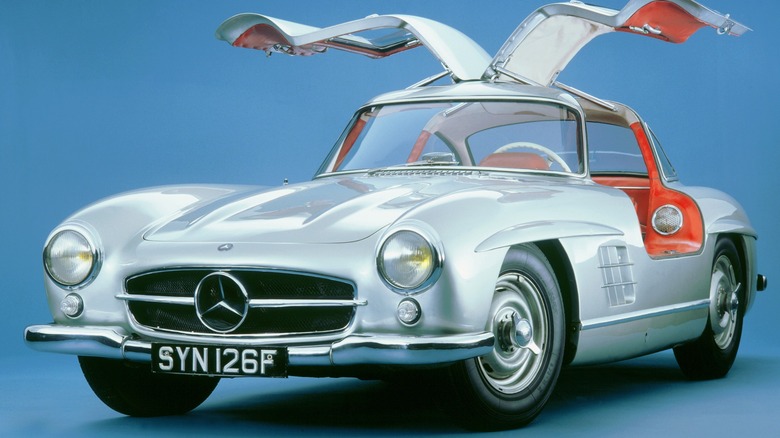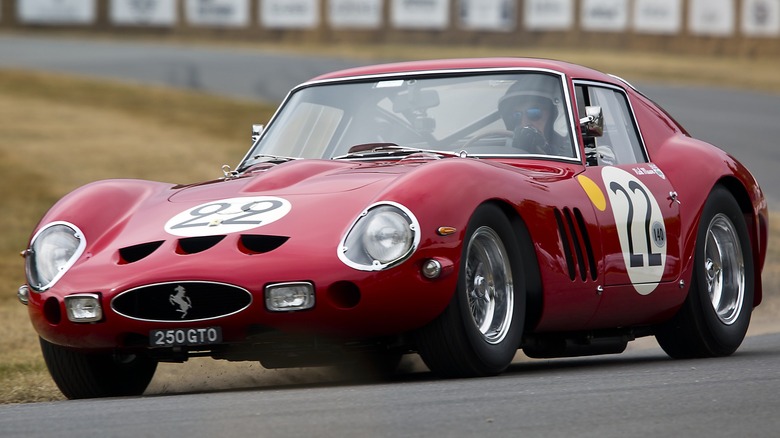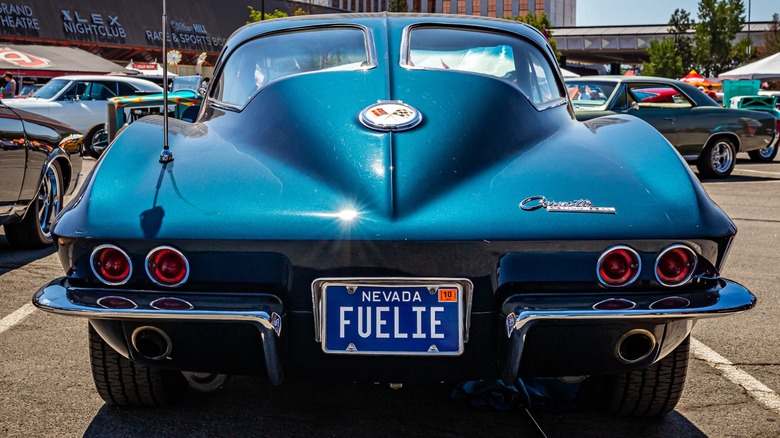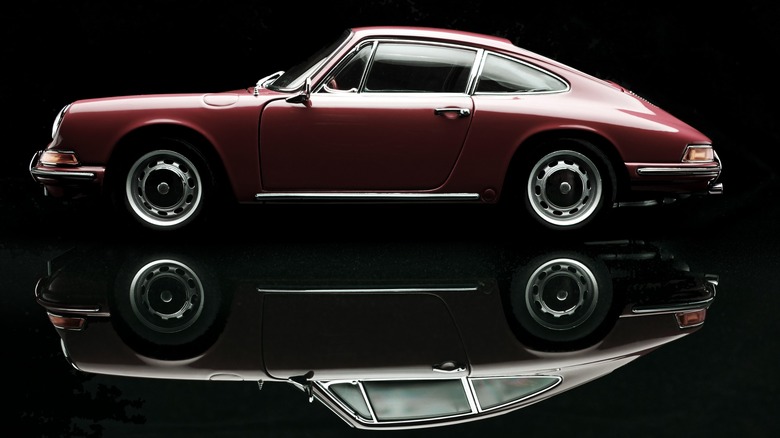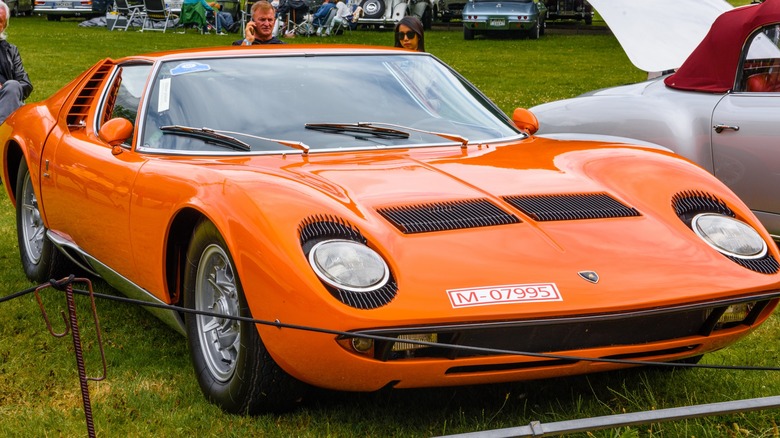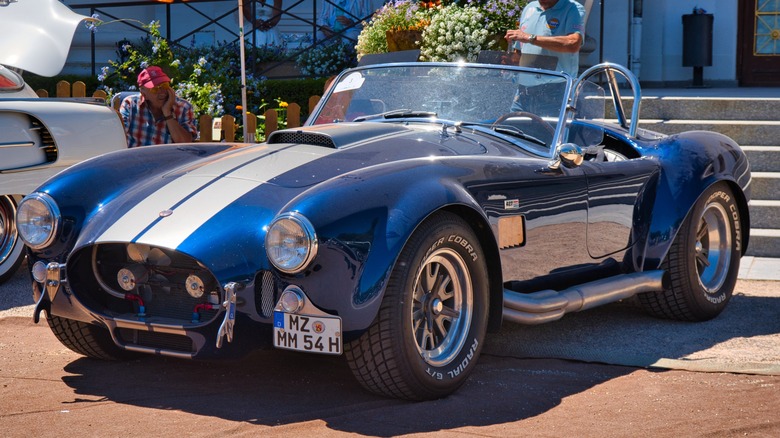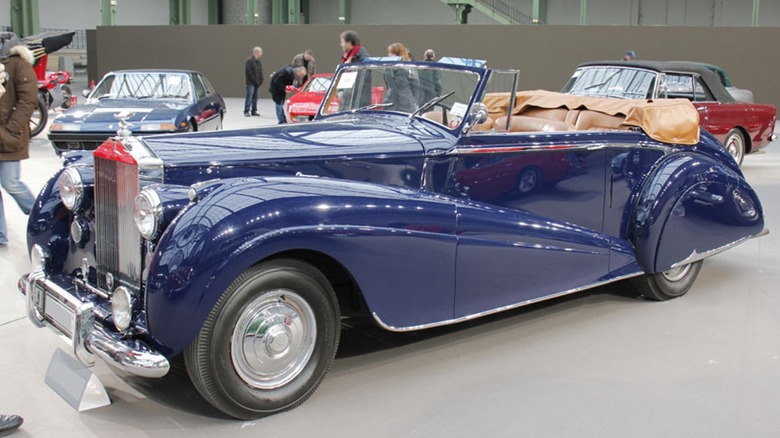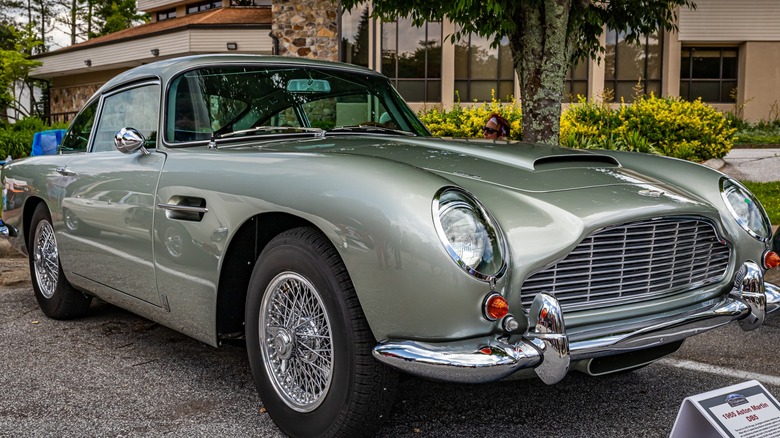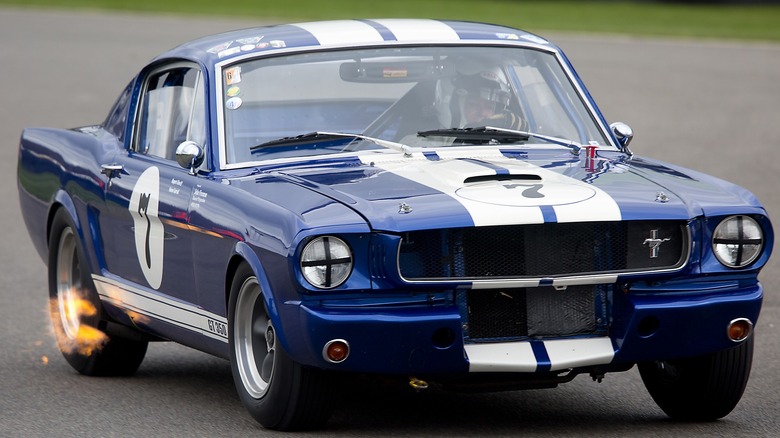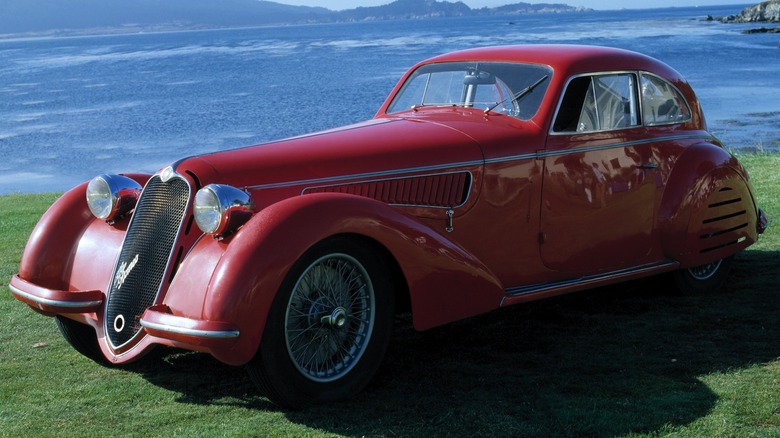12 Of The Most Beautiful Vintage Cars Every Collector Wants
Robert Cumberford, Automotive Design Editor for Automobile magazine, says, "Good design is about the beauty of line." Automobile designs with lines that sweep unimpeded from front to rear, like those of a Ferrari Testarossa, tend to offer an attractive sense of motion and draw the eye. While the phrase "beauty is in the eye of the beholder" expresses the subjective nature of judging a vintage car's beauty, aesthetic appeal is not always the exclusive factor. According to automobile design experts, an attractive design communicates what lies within. A sports car's appeal comes not just from its exotic, aggressive looks or sleek, smooth, flowing lines but often from its performance and handling.
Some collectors see the beauty of vintage cars as an investment opportunity. According to Investopedia, "Classic cars, in general, gain in value more than other types of collectibles..." Other collectors see beauty in the exquisite craftsmanship, timeless charm, or the scent of aged artisan leather upholstery. Still, others may choose the cars they collect for nostalgic reasons, such as the model they drove in their youth. Among all the beautiful vintage cars available, a select few appeal to all types of collectors. Here are 12 of the most beautiful.
1938 Bugatti Type 57 Atlantic
Between 1936 and 1938, Bugatti made only four Type-57 Atlantic coupes, three of which are accounted for, and the fourth has been missing for years. The car's limited production, individually handcrafted construction, and timeless beauty make it one of the most iconic and valuable automobiles ever built. Distinguished by its extended hood and riveted aluminum seam running over the roof, the 12-foot-long Atlantic coupé has a distinct teardrop body design with smooth, flowing lines.
Parisian businessman Jacques Holzschuh purchased Chassis No. 57473, known as the "Holzschuh Atlantic," new from the Bugatti's factory. The car changed hands and, in 1955, was damaged in an accident with a train. Subsequently, it was completely restored and later displayed at the 2010 Pebble Beach Concours d'Elegance. Chassis No. 57374, originally purchased by British banker Victor Rothschild, is completely restored and currently resides at Mullin Automotive Museum in Oxnard, California.
Atlantic chassis 57591, ordered by British barrister and tennis star Richard Pope in 1938 and owned by several subsequent buyers, was purchased in 1988 by collector Ralph Lauren. After a restoration by Paul Russell, the car won Best of Show at the Pebble Beach Concours in 1990 and at Villa d'Este, Italy in 2013. The missing Bugatti Type 57SC Atlantic, No. 57453, known as "La Voiture Noire," was built for Jean Bugatti, son of company founder Ettore. The car disappeared in 1941, and some believe it was stored out of sight as Germany invaded France during WWII. If found, some experts estimate its worth to be over $113 million.
1961 Jaguar E-Type
The Jaguar E-Type ranks at the top of anyone's list of the most beautiful vehicles in the history of the automobile. Enzo Ferrari was rumored to have said that the Jaguar E-type is "the most beautiful car ever made." The sports car's sleek, flowing lines demonstrated attention to both fashion and aerodynamic detail developed without the aid of wind-tunnel tests. Malcolm Sayer, Jaguar's chief aerodynamicist, designed the body shape using a mathematical analysis only, and the result was a gorgeous car with a very low drag coefficient.
Not only did the E-type leave all its admirers in awe, but the sports car, with roots in racing, also exhibited performance unique to road cars. Some experts claim the Series I E-Type's 3.8-liter inline-six engine ranks among the greatest powerplants ever fitted to a production car. Developed from the D-Type race car, the XK-SS road car, and the E2A prototype raced by Briggs Cunningham at Le Mans in 1960, the E-Type was introduced in 1961 and evolved with mostly minor modifications through the 1968 model year.
In 1964, Jaguar upgraded the race-worthy Moss four-speed gearbox (without a synchromesh for first gear) to a Jaguar-designed fully synchronized four-speed manual. The already excellent race-tested brakes from the D-type with two pads per disc were upgraded, and Jaguar enhanced the interior. The most significant changes occurred in 1965 when the automaker bored out the six-cylinder engine to 258 cubic inches (4,235 cubic centimeters), maintaining the same horsepower but increasing the torque to 283 pound-foot at 4,000 rpm.
1957 Mercedes 300SL Gullwing
When Mercedes introduced the SL 300 Gullwing in 1954, it was the fastest production car of its time. The exceptional performance can be attributed to the use of direct fuel injection in a 3.0-liter overhead camshaft straight-six producing 215 horsepower, capable of pushing the car to 160 mph. While the SL 300's top speed is impressive, the visual impact with open gullwing doors gives the car exceptional appeal. It makes it one of the most beautiful and desirable collector vehicles of all time.
Mercedes developed the 1954 Gullwing road car from the 1952 300 SL (W 194) racing version that successfully competed in the world's racing circuits, claiming victories at Le Mans, Bern, the Nürburgring, the Carrera Panamera, and placed second in the Mille Miglia. Mercedes produced 1,371 SL 300s between 1954 and 1957, all two-seat coupes. The car was designed to minimize weight (SL stands for super-leicht in German or super light). Most were made with steel body panels mounted on a tubular frame. However, the automaker also built 29 light-alloy-bodied coupes and one with fiberglass. From 1957 to 1963, Mercedes built 1,858 SL 300s, all roadsters.
The 300 SL Gullwing is one of the most coveted collector cars of all time, a favorite of celebrities and movie stars. At a recent auction in 2020, a 1957 Mercedes-Benz 300 SL Gullwing sold for $1.152 million — however, one of the 29 aluminum-bodied 300 SL examples sold at Monterey in 2020 for $5.01 million.
1962 Ferrari 250 GTO
Ferrari made only 39 250 GTOs between 1962 and 1964. The combination of exceptional beauty, limited production, and incomparable performance brought a sales price of $48.405 million for a 1962 GTO at an auction in 2023. Created by legendary Ferrari engineer Giotto Bizzarrini, the GTO replaced the SWB 250 Berlinetta (short wheelbase) with two significant weaknesses. The Berlinetta became unstable at about 155 mph and could not accommodate the increasing size of racing tires.
To retain full homologation eligibility for the 250 GTO, Ferrari built the car with nearly the same 250GT series dimensions and installed the same 3.0-liter short-block Colombo SOHC 24-valve V12, made with aluminum block and heads and using six two-barrel carburetors. Ferrari conducted wind tunnel tests to analyze the new bodywork, ensuring exceptional aesthetics and aerodynamic properties that would make it competitive with Aston Martin, Jaguar, and Shelby American in the International Championship for GT Manufacturers.
The V12 produced 300 horsepower at 7400 rpm and 250 pound-foot of torque at 5500 rpm, sending power to the rear wheels via a five-speed manual transmission. Car and Driver test results showed the car accelerating to 60 mph in 5.8 seconds, reaching the quarter mile in 14.4 seconds at 108 mph, and achieving a top speed of 144 mph. Ferrari improved the handling in the GTO over the Berlinetta by using lightweight tubing, stiffer springs, and dual Watt's linkages that stabilized the rear suspension and eliminated the high-speed instability that plagued the Berlinetta.
1963 Corvette Stingray split-window coupe
Chevrolet produced the split-window version of the Corvette Stingray only for the 1963 model year, the first year of the C2 generation (1963–1967). Rumor has it that the unique rear window design originated with an obscure German car, the 1938 Adler Trumpf Rennlimousine. Only 10 or so were manufactured, and the styling can be described as peculiar at best (certainly no competition for the Corvette) with a wraparound windshield, a long, tapered tail, and a small split window in the back.
While the Corvette implementation of the split window highlighted the sports car's smooth-flowing fastback, it received a less than enthusiastic reaction from the buying public. Some owners claimed the center pillar blocked rear outward visibility and negatively impacted safety. A few replaced the bisected windowpanes with a single piece of glass and convinced the automaker to install a single back glass for the 1964 model year.
The C2 generation Corvettes were among the most powerful cars of their time. Chevrolet offered the 1963 Corvette with a small block 327 cubic inch engine in four states of tune, with high-lift camshafts and fuel injection, the most powerful of which produced 360 brake horsepower. Both the coupe and the convertible were built with the traditional fiberglass body mounted on a steel ladder frame chassis. The front suspension remained unchanged from the C1 with unequal A-Arms and a standard anti-roll bar, while in the rear, an independently sprung suspension featured half shafts and a transverse leaf spring.
1963 Porsche 911
Although the Volkswagen Beetle and Porsche 911 share origins — the former having been designed by Dr. Ferdinand Porsche and the latter created by his son, F.A. Porsche (Ferry) — each vehicle has its own unique character. Dr. Porsche designed the Beetle as an affordable, practical "people's car," while the 911 design emphasized aerodynamics, minimal weight, and power for optimal performance at a much higher price.
The first version of the 911 was equipped with a 2.0-liter horizontally opposed air-cooled six-cylinder engine, an upgrade from the 356 model's four-cylinder boxer. The power produced varied by engine version, with most generating 130 horsepower at 6100 rpm and 119 pound-foot at 4600 rpm, while the racing models output reached as high as 210 horsepower. The road car accelerated from 0–100 kmph (62 mph) in 9.1 seconds and had a top speed of 210 kmph (130 mph). While these numbers seem mediocre, by today's standards, they were impressive for a production sports car in the early 1960s.
The original 911 had 2 + 2 seating with rear engine configuration, and the design has remained with slight variations throughout the succeeding 60 years. The early 911 was a small car, typical of most sports cars of that era, and its lightweight helped it perform well without the use of exceptionally powerful engines found in today's models. The teardrop form and lower hood design with the engine in the rear gave the 911 better aerodynamics than its competitors and helped make it one of the most beautiful classic cars desired by collectors.
1966 Lamborghini Miura
When Lamborghini introduced the Miura in 1966, the sleek body with flowing lines, designed by the famous Carrozzeria Bertone, was considered by many to be the most beautiful sports car of its time. The Miura's body style was influenced by its mid-engine configuration. Before the Miura's introduction, most road-going cars were equipped with an engine in front that drove the rear wheels. However, racecar designers discovered you would get the best handling results from a car with the engine placed in the middle of the chassis, allowing for an even distribution of weight front-to-back.
Miura's mid-engine position not only contributed to its excellent handling but also helped define its unique body style, allowing a nose shorter than the typical front-engine sports car of the era. The 2-door coupe's sleek form featured retractable headlights surrounded by unusual slatted black "eyelashes" and unique clam-shell hoods on both the front and rear. Built to compete with Ferrari, the Miura features a powerful transversely mid-mounted 3.9-liter 60-degree V12 engine with six carburetors and the performance of a supercar. The engine produced 350 horsepower and 300 pound-foot of torque, accelerating the car to 60 mph in 6.3 seconds. The Miura reached the quarter mile in 14.5 seconds and achieved a top speed of 163 mph.
However, the Lamborghini Miura wasn't perfect. Despite the seemingly ideal aerodynamic body shape, the Miura became notorious for generating significant front-end lift at high speeds. Lamborghini engineers corrected the dynamic flaws in subsequent models highlighted by the release of the Miura SV in 1971.
1966 Shelby 427 Cobra
The Robb Report claimed the Shelby Cobra is "one of the finest sports cars of the last century." The sleek front-engine, rear-wheel-drive, two-passenger roadster, powered by a 427 cubic inch engine, looks like it is going 100 mph even when standing still. Its irresistible allure has fostered the creation of numerous replicas, many of which do justice to the sports car's beautiful shape and performance.
Equipped with a pushrod 16-valve 427 V8, fed by two 4-bbl Holley carburetors, the Cobra generated 485 horsepower at 6500 rpm and 480 pound-foot of torque at 3500 rpm. Perhaps the best measure of the sports car's exceptional straight-line performance is the time to accelerate from 0 to 100 mph and decelerate back to a stop. The Cobra, driven by an average driver and fitted with regular 8.15 x 15 Goodyear Blue Dot Street tires, did it in 14.5 seconds. Cobra test driver Ken Miles, part of the crew at Shelby American, did it even faster at 13.8 seconds.
Although the Cobra exhibited record-breaking speed and braking, the early model sports car's handling suffered from a flexible frame and antiquated suspension system designed just after WWII using leaf springs and lower wishbones. In 1965, 29 unused competition chassis were redesigned to create the Cobra 427 S/C (Semi-Competition). These street-legal machines with race car features such as the oil cooler, roll bar, and side exhausts also addressed the handling issues. A larger diameter tubing on a wider frame and a new coil-spring suspension made a significant improvement over the older transverse leaf-spring configuration.
1955 Rolls-Royce Dawn Drophead
After dedicating manufacturing facilities to the production of the supercharged Rolls-Royce Merlin V12 engine for use in American and British aircraft during World War II, the company returned to building a limited number of luxury automobiles. Rolls-Royce built only 760 Silver Dawn units from 1949 to 1955, most as four-door saloon cars, and only 28 were the convertible Drophead models. Today, private collectors own three of the original 28 Dropheads that remain in the U.S.
The "Fans of Car SOS" — a television series in which Tim Shaw and master mechanic Fuzz Townshend restored classic cars for private owners — website described the 1949 Rolls-Royce Dawn Drophead: "A design that transcends time. Its elegant lines, curves, and attention to detail reflect the meticulous craftsmanship synonymous with the Rolls-Royce brand."
The lavish car had a refined, sophisticated look featuring a long, sweeping hood boasting the iconic "Spirit of Ecstasy" ornament and a prominent grille made with vertical slats. The luxurious interior was adorned with sumptuous leather upholstery and handcrafted wood veneers, but buyers had the option to customize the cabin according to individual preferences. Suicide doors on the Dawn Drophead opened backward, providing easy access to the rear seats while creating a sense of exclusivity.
Designed for traveling in comfort and opulence rather than sports car performance, the 1949 Rolls-Royce Drophead was equipped with a 6.6-liter twin-turbocharged V12 engine mated to an eight-speed automatic transmission that produced 128 horsepower. The car accelerated from 0 to 60 mph in 16.2 seconds and could reach a top speed of 87 mph.
[Featured image by nemor2 via Wikimedia Commons | Cropped and scaled | CC BY-SA 2.0]
1964 Aston Martin DB5
In the early '60s, when the designers at Carrozzeria Touring Superleggera in Italy conceptualized the DB5, they may have predicted the car would become a classic worth nearly a million dollars. However, they had no idea the sports car would become iconic for its use by James Bond in Ian Fleming's spy thrillers. The company used its patented magnesium alloy bodywork technique to shape the DB5. The bodywork is a combination of flowing lines and sharp corners. Round fender-tops flow back from elegant glass covers over sealed-beam headlamps. The smooth and flowing curves of the nose profile contrast with the sharp-cornered rear fins, and the "wing mirrors" mounted midway up the hood contribute to the DB5's distinctive look.
Aston Martin offered the DB5 (1963 to 1965) in a Coupe, Convertible, Vantage Coupe, and Vantage Convertible, but a small number were converted to a shooting brake (station wagon version of a coupe). The sports car was equipped with an updated (from the DB4) 4.0-liter dual-overhead-cam straight-six engine with triple carburetors and a twin-spark-plug design that produced 282 horsepower and 288 pound-foot of torque. Power was sent to the rear wheels via a ZF five-speed gearbox.
Although the DB5 acceleration improved over its predecessor, a time of 8.0 seconds to reach 60 mph would be considered average for the mid-1960s. As a comparison, the 1965 Porsche 911 accelerated to 60 mph in 7.0 seconds. The more powerful Vantage version delivered 325 horsepower but with similar performance characteristics.
1965 Ford Mustang Shelby GT350
While many of the most beautiful vintage cars are appealing for their "work of art" body style, the beauty of the Mustang Shelby GT350 derives from its appeal to high-speed car enthusiasts. A collaboration between Ford Motor Company and former race car driver Carroll Shelby, the GT350 looks best while driving fast.
In stock form, the 1965 Mustang was equipped with a high-performance edition 289 cubic inch V8 that produced 271 horsepower. However, in its tuned form, the GT350's engine, connected to a Borg-Warner T-10 four-speed gearbox and fed by a Holley four-barrel carburetor, produced 306 horsepower at 6,000 rpm and 329 pound-foot of torque at 4,200 rpm. It accelerated the Mustang to 60 mph in a mere 6.6 seconds and propelled the sports car to a top speed of 138 mph.
The first 100 Shelby roadworthy Mustangs featured an air scoop on the hood, a fiberglass front apron, an open grille, and Goodyear Blue Dot tires mounted on 15 x 7-inch wheels covered by enlarged fender flares. Each GT350 was distinguished by Wimbledon White with Guardsman Blue stripes painted on lightweight fiberglass hoods. Shelby removed the rear seating and installed fiberglass side and rear windows within aluminum frames to help reduce weight. The cabin featured a new instrument cluster, including a revised tachometer and, for safety, a four-point roll cage. Split, low-back bucket seats and a wood-rimmed steering wheel adorned the stock Mustang all-black interior.
1938 Alfa Romeo 8C 2900B MM Spider
In 1938, after several years of inactivity, Alfa Romeo returned to motor racing. The company designed and built the 8C 2900B MM Spider for re-entrance, producing five units for the Mille Miglia event. The car not only featured racing performance characteristics but also displayed the smooth sleek lines characteristic of the most beautiful vintage cars. Peter Fiell of Taschen Publications said, "It is generally considered the most collectible pre-war sports racing car of all time."
The casual observer is immediately struck by the beauty of overwhelming fenders that dominate its appearance, a feature of modern sports cars that has virtually disappeared. Also catching the eye is an imposing rearward slanting grille that separates the headlights mounted on the body surface rather than recessed inside. Alfa Romeo built less than 30 examples of the 8C 2900B, among which coachbuilder Touring of Milan shaped an estimated 10 to 12 open two-seater body style "Touring Spiders."
The 8C 2900B models were fitted with a 2.9-liter straight eight-cylinder made with an aluminum block and fixed aluminum hemi-head, generating 180 brake horsepower at 5,200 rpm. A gear-driven mechanism between each four-cylinder block drove the valve system with DOHC and two valves per cylinder. Engine aspiration was provided by twin Weber carburetors with twin Roots-type superchargers, each dedicated to one four-cylinder block. Power was sent to the rear wheels via a transaxle gearbox, and an all-independent suspension provided a smooth and stable ride. The Alfa Romeo accelerated to 60 mph in 9.4 seconds and reached a top speed of 112 mph.
